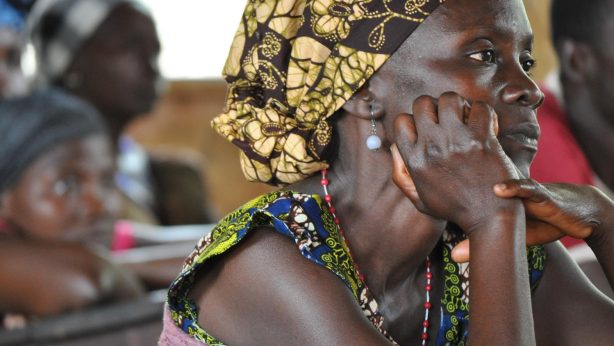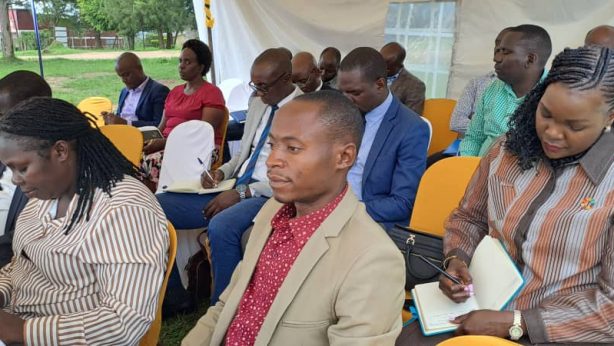Citizen Agency in Rwenjaza
Three brothers in Rwenjaza village, Kyenjojo District, have become a powerful symbol of community agency and champions of self-driven development. When efforts to expand a critical road (Rwenjaza-Kahombo road) stalled due to the massive rocks encountered on the site, they made a bold and selfless decision. They donated part of their highly valued family land to allow the community to create a new road, which transformed the daily lives of hundreds of residents who used it. Their actions continue to inspire a collective spirit of empowerment, where citizens are leading the charge for their own development.
Land is deeply treasured in Uganda and across Africa. Giving it up, even for communal benefit, is no small sacrifice. Yet, Mugisa and his two brothers did not hesitate. They had seen firsthand the benefits of PAR introduced by Twaweza East Africa through its local partner, Human Rights and Democracy Link Africa (RIDE), in their community. They understood that for their community to thrive, their contributions and efforts were essential.
“We wanted development,” said Mugisa. “Our children were getting sick every day from arriving wet at school. We also struggled to carry our farming produce through the bushy road to the market. Now, the cars come up to our gardens and pick up produce directly. I am proud of what we have achieved.”
The road in question was initially a narrow, bushy path that posed serious risks. School-going children braved the wet conditions every morning, arriving at the only school in their community, Rwenjaza Primary School, soaked and uncomfortable. These pupils and other residents risked snake bites as they pushed through the thick bushy path. Farmers struggled through this path to get their produce to market. The path was not just an inconvenience; it was a threat to the community’s safety and livelihoods.
Empowered by the introduction of the PAR model in their village, the residents teamed up and started clearing the bush with their hands using pangas and hoes. Using PAR tools, they worked together and engaged their local leaders for support. Their efforts brought in a grader from their sub-county, which expanded the road by about one kilometre. However, progress stopped abruptly when the grader encountered massive rocks that could not be excavated. At this point, the sub-county lacked the resources to push further.
It was at this point that the three brothers stepped forward. They donated land to reroute the road around the rocks after seeing the progress in their community and the challenges ahead. Their action reignited momentum among the residents of Rwenjaza and Kahombo, allowing the community to complete a critical section of the road and connect two villages: Rwenjaza and Kahombo, both located in Bufunjo Sub-county, Kyenjojo district.
While the new road marks a significant victory, challenges remain. Down the valley, at the point where the two villages connect, a small stream continues to interrupt the path, necessitating the construction of a bridge. Currently, residents from both neighbourhoods have worked together to place logs across the stream, allowing people to cross it. While at this stream, we realised using these logs to cross the stream is even scarier; it reveals how difficult the journey remains and how much effort is still needed to connect these two neighbourhoods.
While talking to one female resident of the area, she captured this hardship perfectly when she said, “Imagine a woman on top of those weak, shaky logs, carrying a basket of harvested food, such as maize or cassava, and a baby on her back.” This everyday reality has made the community even more determined to continue their work.
Despite these challenges, the spirit of Rwenjaza remains unshaken. Whenever residents gather for community PAR meetings, they greet each other with a powerful phrase that holds them firm and has become their motto:
In their local language, they say, “Enkurakurana ye kyaro kyaitu bujunanizibwa bwaitu,” which means, “The development of our area is our responsibility.” This greeting also serves as a reminder of their collective commitment to developing their community.
The chairman of Rwenjaza village, who is also a local leader, praised the impact of the PAR approach in his area. “The PAR model has helped me to address some of the things I would not afford, such as bringing people together for a common cause,” he said. He expressed optimism that if the community continues to embrace PAR, the future of Rwenjaza will be even brighter.
The story of the three brothers and the Rwenjaza community is a powerful example of what happens when citizens are empowered to take charge of their development. It shows that with agency, participation, and collaboration between citizens and government, communities can overcome even the most difficult challenges and create lasting change.
Judith Nakayima, Assistant Program Officer, Voice and Participation, and Nelson Bahati, Communication Consultant at Twaweza Uganda, wrote this blog post.


